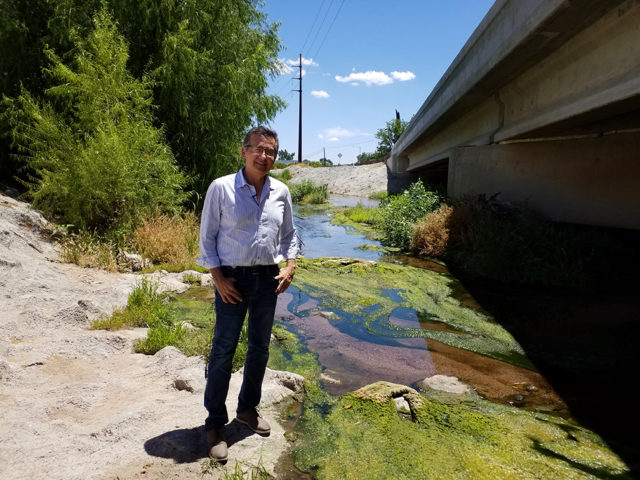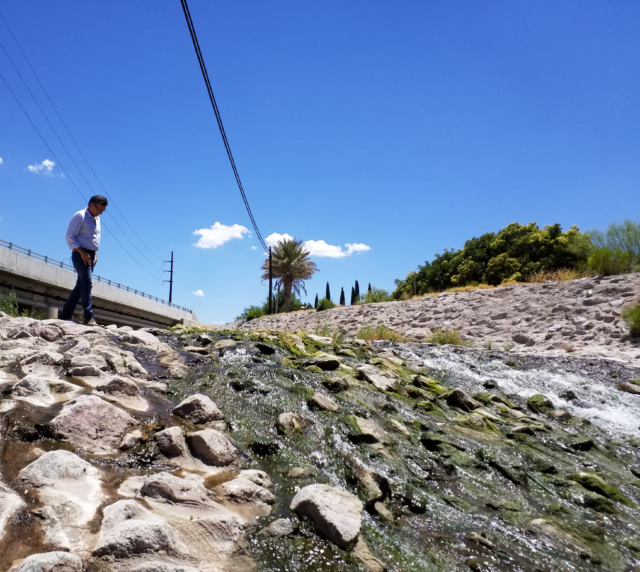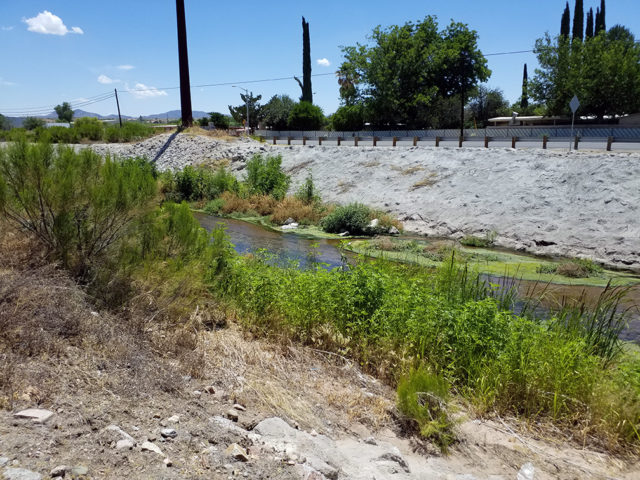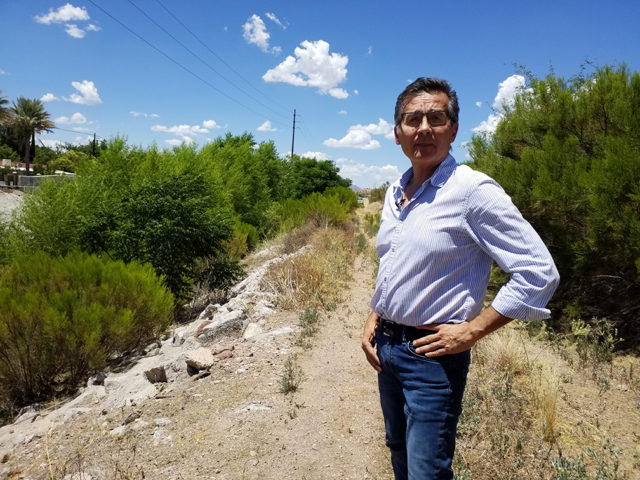
Born a block from the border, Guillermo Valencia dedicates his time and career to benefit Ambos Nogales, the twin cities on either side of the U.S.- Mexico border. As a child, he remembers riding on a Cinco de Mayo parade float through open gates from Nogales, Sonora, to Nogales, Arizona. He speaks fondly of the support these two communities have always offered one another, partnering on everything from sports and parades to emergency services.
These days, Guillermo continues this cooperative approach as chairman of the Greater Nogales and Santa Cruz County Port Authority, a volunteer organization that brings together area business leaders and local officials to support economic development and improve quality of life on both sides of the border.
“The main topic now,” Guillermo says, “is water.”
Stormwater flooding and sewage contamination have put his community at risk in recent years. At Old Tucson Road, toward the north end of Nogales, Arizona, Guillermo points down: “Underneath us is an item of grave concern for us,” he says. “It’s an issue of local and international concern, and we are all working on it.”

Guillermo is referring to the infamous International Outfall Interceptor (IOI) and the Nogales Wash. The IOI is an underground wastewater pipeline that carries untreated sewage from Sonora to the treatment facility downstream in Rio Rico, Arizona. And just above it, the Nogales Wash carries stormwater from the mountains, through Ambos Nogales, and into the Santa Cruz River.
“Everything converges into the Nogales Wash. When the wash floods, it affects everyone in the area.”
—Guillermo Valencia, chairman of the Greater Nogales and Santa Cruz County Port Authority
Against the desert landscape, the Nogales Wash can be picked out from far away because of the line of tall trees growing alongside it. Guillermo looks out over the wash, considering its path. Whenever monsoon rains create unmanageable amounts of stormwater, which happens routinely, the Nogales Wash overflows. “There is not enough of a drainage system in Nogales, Sonora,” he says. “Everything converges into the Nogales Wash. When the wash floods, it affects everyone in the area.”
Guillermo gestures to the neighborhood across the wash. “When I first got married, I rented in these apartments. The wash would overflow and sometimes go into these lower apartments here. The wash winds, and heads toward the street. Here it jumps the bank sometimes; and, Guillermo says while gesturing, it will flood this lowland area there. These warehouses on the other side and the railroad all get affected at one point or another.”

In response to extreme flood situations, manhole covers in Sonora are lifted to divert water out of the streets and into the IOI. The additional flows into the aged pipeline eventually created cracks allowing sewage to seep into the wash. Sewage contamination compounded the destruction that flooding already wrought: property damage, flooded streets, and even loss of life. “Just about every year, without fail, we lose people to these storm flows,” Guillermo says gravely. “Sometimes, there must be a tragedy for people to know what’s going on.”
“The water, it’s beautiful, and I’m of the idea that we should do something as a community to enhance that area so people can enjoy it more. That’s my dream. I’d like to see something like that happen here.”
—Guillermo Valencia, chairman of the Greater Nogales and Santa Cruz County Port Authority
In 2017, the IOI finally ruptured, and raw sewage spilled into the wash, contaminating the groundwater. Guillermo had gone to see the spill in person. “We were standing on the bank near Old Tucson Road,” he recalls. “Obviously, the smell was not nice. A continuing stream of effluent was going into the stream. You see the cloudy, murky water. It made you wonder what else [is at risk]. A lot of the concerns with the wash and the IOI, you don’t see with your eyes.”
Guillermo says the city did a good job responding to the emergency, but not everything has been addressed. “There are a lot of layers to the issue of stormwater and the IOI,” he says. “These are fascinating and troubling issues that bring a lot of players to the table.”

While the answer is not straightforward, addressing the wash challenge is another opportunity for the two border communities to combine their strengths. In the local history of binational collaboration, Guillermo sees the path forward to finding an enduring solution. “There must be collaboration, organization, and synchronization from international agencies, foreign agencies, local agencies, and so on,” he says. “We need sensible negotiations and agreements so that both sides [of the border] don’t negatively affect each other.”
Guillermo, for one, is confident in the positive impact a healthy river could have on Ambos Nogales. Visiting the wash today, Guillermo finds a surprising amount of clean water there, more than he had expected. In the mud, small birds search for food around lines of fresh raccoon tracks.
“The water, it’s beautiful, and I’m of the idea that we should do something as a community to enhance that area so people can enjoy it more. I’m sure there’s something we can do to make it even more enjoyable for our community. That’s my dream. I’d like to see something like that happen here.”
This post is part of a series of community voices about the Santa Cruz River.
Read the other posts by clicking the links in the introduction: When You and the River Meet
Blog series by Amanda Smith, Program Coordinator.
Copy-editing and audio-editing services donated generously by Nicole Cloutier and Jonathan Palomino.
